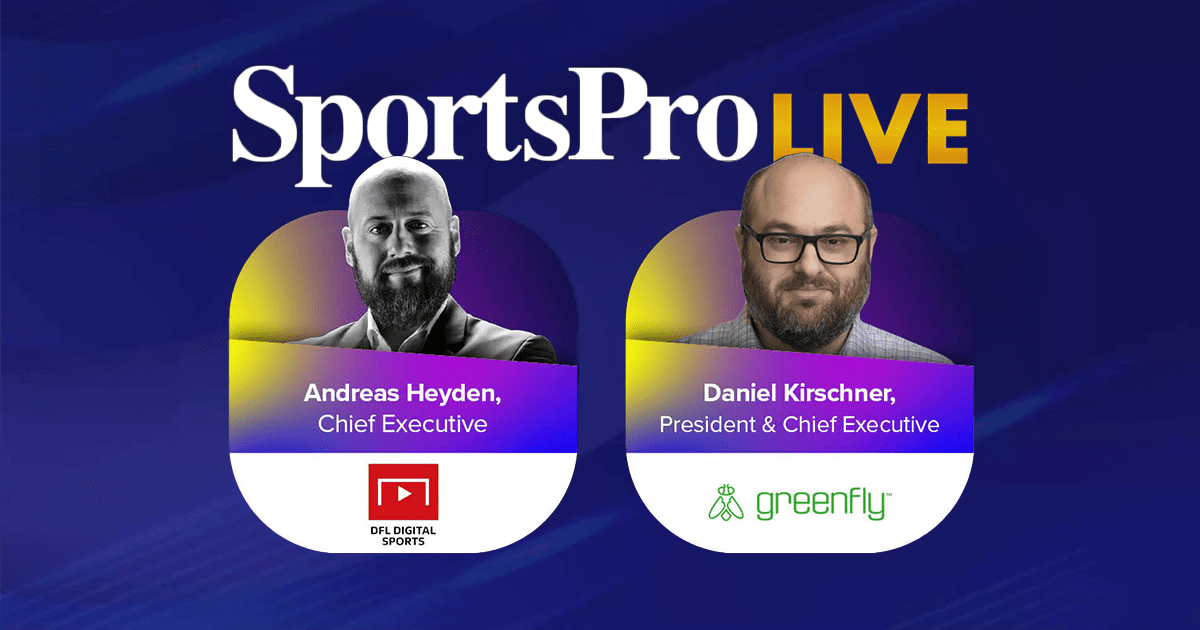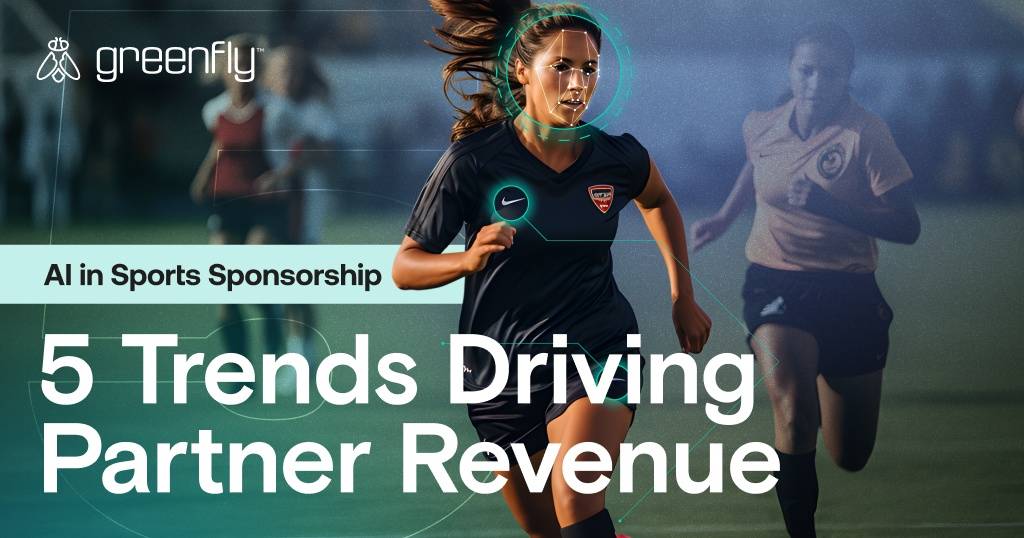Savvy sports marketers now know that unique, original content captured specifically for social media plays better with audiences than repurposed broadcast clips.
DFL Deutsche Fußball Liga, the governing body of the Bundesliga, is leading the way on that front by bringing authentic, in-stadium European football media direct to fans.
Andreas Heyden, CEO of DFL Digital Sports GMBH, joined Greenfly CEO Daniel Kirschner for an engaging discussion on this topic and more at Sports Pro Live 2021, moderated by Paul Guest, Commercial Director at SportsPro.
Listen for details on how DFL has recalibrated sports media operations with its innovative ‘Social Media Matchday Feed’ powered by Greenfly. The league now captures original in-stadium content and distributes it in real time to Bundesliga clubs, global media partners and fans everywhere — delivering more value and a more personalized, up-close experience with all the thrills of live matches.
Watch the Video
“In a very short turnaround time, we’ve created over 30 million impressions already on content pieces that have been created on top of our normal content production.” — Andreas Heyden, CEO of DFL Digital Sports GMBH
Heyden framed the DFL’s matchday content distribution as driven by a “glass to glass” strategy: The league starts with the glass of the camera lens capturing content and ends with the glass of a television set or mobile phone screen delivering it to broadcast partners, then to audiences worldwide.
DFL’s digital staff contended with finding ways to keep up with changing content consumption behaviors and stay connected with remote fans during the pandemic. They found an opportunity to create more value for partners and more deeply engage with fans by exploring new methods for capturing and delivering all the live matchday action happening between those two points.
DFL recognized that sports fans today (particularly younger fans) want content experiences specifically designed for social and digital platforms. Raw, authentic content that brings fans closer to the pitch and their favorite athletes resonates with them — not repackaged clips from a broadcast feed.
Kirschner concurred that there has been a move across sports toward authenticity and immediacy versus polished matchday content. As Heyden noted, with no fans in stadiums, DFL was able to experiment around content, and there was more openness to lightweight production.
DFL and the 36 Bundesliga clubs jointly launched the Social Media Matchday Feed, powered by Greenfly’s media exchange platform. This match-specific innovation enables each club’s dedicated social media reporter to create exclusive content in and around the stadium. The content is automatically delivered to over 60 international media partners, along with global viewers and fans, so they can follow matchday events even more closely in real time. The framework for centralized media organization and distribution includes a content management system (CMS) custom-developed for DFL by Greenfly.
With this transformed media workflow, DFL can now bring together its entire content ecosystem seamlessly to create large volumes of high-quality and relevant, social-first content faster. Getty Images media, authentic stadium moments and more are organized and accessible in one central hub for routing so social media teams can quickly select and deliver the best content for the right time and channel.
As Kirschner highlighted, the league can now pull in content and apply intelligent routing and curation tools to move media in around one minute from the pitch to whoever needs to access it for social channels. This speed is critical for driving excitement and keeping engagement around an event and optimizing the impact, reach and efficacy of a particular piece of content.
The two discussed that this advancement has also helped DFL liberate stadium areas that normally have restricted access to camera equipment and unlock matchday moments to create relevant content faster. It has also helped the league enable social team creativity to build new insights, and understand how different types of content perform in different environments.
Heyden and his team learned during the pandemic crisis that there are new ways to generate exciting content, and being edgy and rough and delivering surprising angles on content upgrades the media product and helps to prolong the story. And he pointed out that sharing content with Bundesliga clubs for their channels has been a magic mix; giving them content rights they normally don’t have has benefited both them and the league overall.
Looking ahead, Heyden offered the main challenge for marketers is that digital and channels that let fans engage with content won’t go away. They will create new sources of revenue, allowing the packaging of content in a different way beyond time and place. Kirschner put forward that it’s important to not predict the future too keenly but build a system to empower it. He said the key is understanding there are lots of sports fans engaging in lots of places and in lots of different ways. Channels will evolve, so marketers should build out their infrastructure to serve those and stay nimble.
Watch the full panel discussion above.


